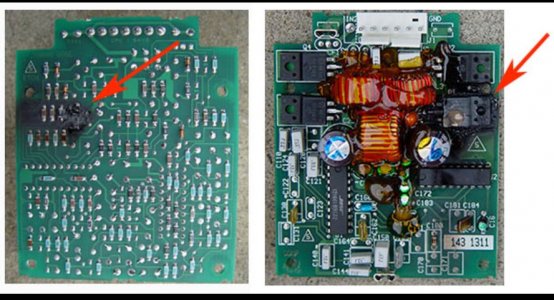I just replaced all the capacitors in my pioneer (​edit: alpine, my mistake) head unit and began to troubleshoot why no sound is coming from the speaker in my right door. After removing the speaker pod this is what I found inside:


Not good! That mosfet overheated badly, but why? @Heineken has noted previously that a failing u2 can cause the mosfets to overheat, but it's also possible that I caused the damage during a previous attempted repair at the headunit and installed a cable incorrectly.
So what to do? First step is to remove the obviously damaged parts and take a look at the board. After that I'll probably check continuity of the vias, order 4 of the IRFIZ24N, one of the 33j capacitors and one of the 50v 1u cap and see what happens when I replace everything.
Any/all advice is welcome, this looks like a pretty challenging, or impossible, repair.


Not good! That mosfet overheated badly, but why? @Heineken has noted previously that a failing u2 can cause the mosfets to overheat, but it's also possible that I caused the damage during a previous attempted repair at the headunit and installed a cable incorrectly.
So what to do? First step is to remove the obviously damaged parts and take a look at the board. After that I'll probably check continuity of the vias, order 4 of the IRFIZ24N, one of the 33j capacitors and one of the 50v 1u cap and see what happens when I replace everything.
Any/all advice is welcome, this looks like a pretty challenging, or impossible, repair.
Last edited:








